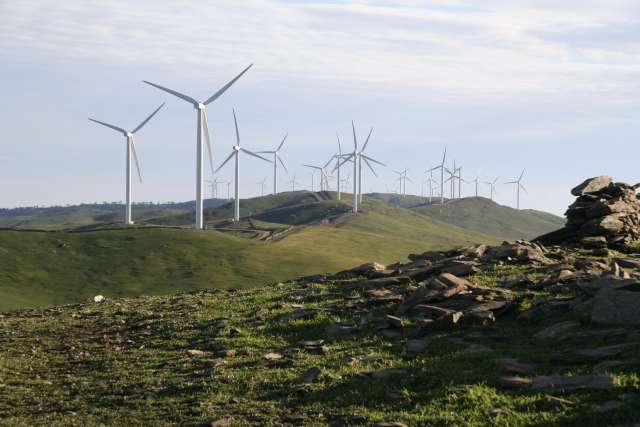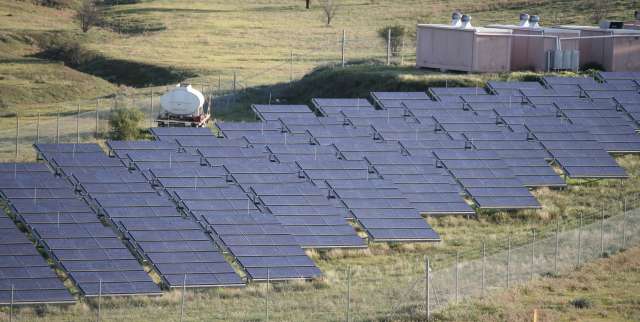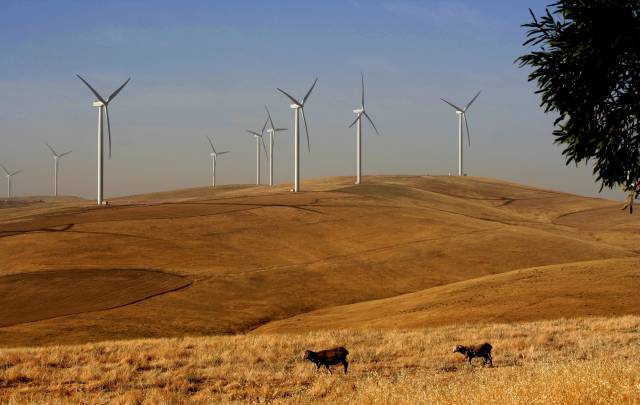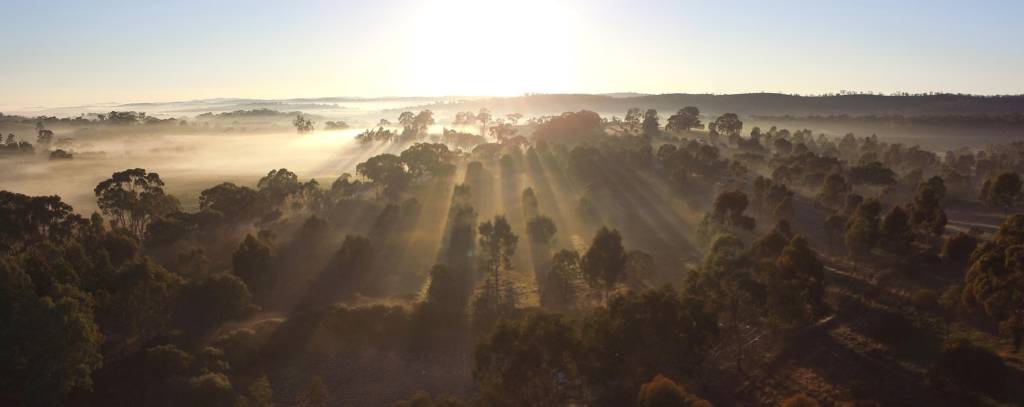| |
| Brown Hill Range Wind Farm
|
|---|

| | One of the many wind farms in Mid North South
Australia
|
|
|
|
|
| Wilpena solar power station
|
|---|

| | A very early solar power installation, 1998, in the Flinders Ranges of South Australia
|
|
|
|
|
| Clements Gap Wind Farm
|
|---|

| | Another Mid North wind farm
| |
Nations and change
The Australian and Canadian governments, both in countries that have been
heavily reliant of fossil fuel exports, are resisting changes.
They are being left behind by countries like Norway, which has also done
very well out of fossil fuels, but is willingly encouraging change toward
renewable energy rather than trying to cling to the past.
It seems that the Australian government believes that there is so much money
invested in the Australian coal industry (in particular) that it must be
propped up for as long as possible.
Of course this is only delaying the inevitable.
If the government was to recognise that change away from fossil fuels must
come, if it was to accept that change and encourage it rather than resisting
it, the transition would
come with much less pain: environmental, emotional and financial.
Communities and change
It happens that wind power has been more developed in my region and
state, the
Mid North region of South Australia, than elsewhere in Australia.
The region has a top-class wind resource and the state has a government that
has embraced the necessary change toward renewable energy.
I see communities that have welcomed wind farms and communities where there
is a vociferous minority of people
resisting the change by misrepresenting
the facts, exaggerating, and downright lying.
The reader will probably not have any difficulty in guessing which of these
communities is the happier.
There are two ways of looking at a proposed local wind farm:
- An imposition, a blot on the landscape, an intrusion of industry into a
rural area, or
- A new opportunity, a source of local employment, increased income for the
farmers who are hosting the wind turbines, a source of finance for community
development and a local asset that can show the world that the people in this
area are proud to be a part of the necessary change to renewable energy and
away from the damaging use of fossil fuels.
The people of the Mid North town of Snowtown, where there is the most
productive wind farm in Australia, have embraced change; they are
very happy with
their wind farm.
(I recently put in a few hours on the local Clare Lions BBQ with a fellow
Lion from Snowtown who said that the wind farm was "the best thing that ever
happened to Snowtown".)
Similarly,
Wattle Point Wind
Farm near Edithburgh on southern Yorke Peninsula
seems to have been happily accepted by the local people,
Clements Gap Wind
Farm on the south side of Crystal Brook and
Hornsdale, north of
Jamestown, too.
On the other hand there is the case of another wind farm that was proposed on
the north side of Crystal Brook.
Here there was resistance, particularly from one individual
(Sarah Laurie)
who went around telling people, with a complete lack of supporting evidence,
that nearby wind turbines would make them ill.
The proposed
Ceres Project, that would
put 199 wind turbines around the
middle of Yorke Peninsula also has met with vociferous resistance; most of it
coming from a very few people who have little respect for the facts (the
Heartland Farmers).
Opponents of wind farms like to blame the wind farms for
social disruption;
they refuse to recognise that there is no social disruption where there is no
dishonest and aggressive opposition.
We need to stop burning fossil fuels; coal should be the first to go,
followed by the liquid and gas fossil fuels.
Modern society demands cheap energy, the environment demands clean energy.
Renewable energy development must happen if we are to pass on to our
children and grandchildren a planet that we have not greatly damaged.
Wind and solar power must be developed as quickly as possible.
Embrace the change!

